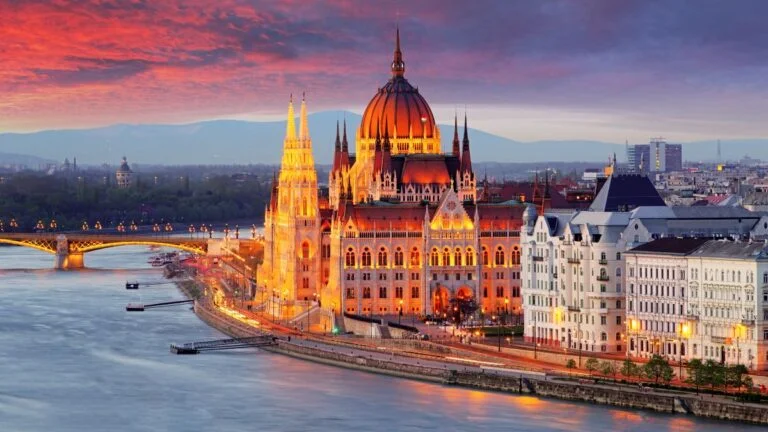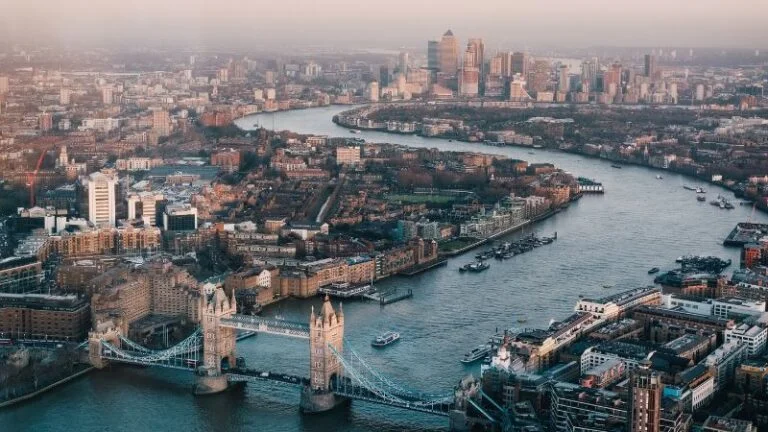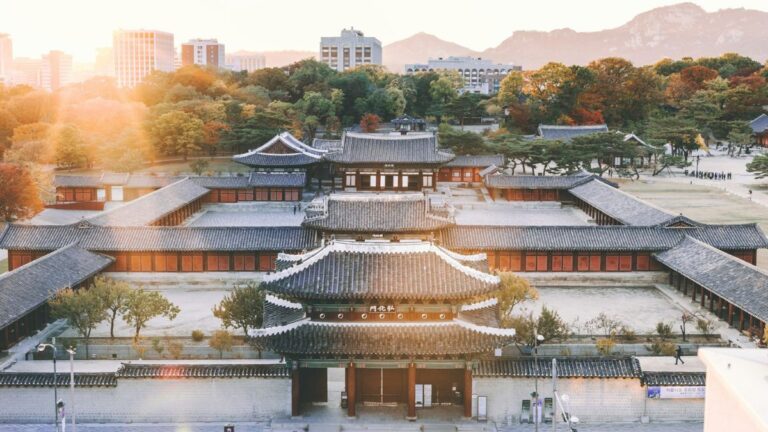Worst Time to Visit Madrid: Managing the Tourist Rush and Expensive Prices

As participants in Amazon Associates and other programs, we earn from qualifying purchases. This comes at no additional cost to you. For more details, see our Affiliate Disclosure.
Visiting Madrid, Spain’s vibrant capital, can be an unforgettable experience filled with cultural exploration, delectable cuisine, and captivating history. However, timing can drastically alter the quality of your trip. There are periods when the city’s charm is overshadowed by overcrowded attractions, sky-high prices, and the scorching summer heat.
Navigating the bustle of tourism and managing expenses can feel overwhelming, which is why understanding the worst times to visit Madrid can transform your journey into a more relaxed, affordable, and enjoyable adventure.
Understanding Madrid’s Peak Tourist Season: When and Why?
Madrid, with its eclectic mix of modern cityscapes and historic quarters, museums, and delectable tapas, has a magnetic allure that draws millions of visitors each year. The city’s peak tourist season, much like most of Europe, tends to fall during the summer months, specifically from June to August. This period coincides with school vacations in many parts of the world, making it a prime time for families to travel.
Another factor contributing to the summer surge is the numerous events and festivals held during these months. From the vibrant LGBT Pride celebrations in June to the lively street parties of the La Paloma Festival in August, Madrid is buzzing with activity. While these events add to the city’s charm and entertainment options, they also attract large crowds, creating a hectic and bustling environment.
Also, bear in mind that the Easter holiday period, Semana Santa, can also see a considerable influx of visitors. This week-long religious celebration brings an air of solemnity mixed with grandeur to the city’s streets, with processions and other religious activities that are a spectacle for locals and tourists alike. However, the significant increase in tourists during this time can also mean crowded attractions and elevated prices.
Lastly, the end of the year, particularly the Christmas and New Year holidays, is another peak time in Madrid. The city gets decked up with Christmas markets, dazzling lights, and festive cheer, drawing tourists worldwide. Yet, the same rules apply – the greater the demand, the higher the prices, and the longer the queues.
Consequences of Visiting During High Season: From Crowded Streets to Long Queues
Visiting Madrid during its high season, while often associated with lively events and festivals, comes with several consequences that could affect the overall quality of your travel experience.
Firstly, the city’s popular tourist sites, such as the Prado Museum, Royal Palace, and Retiro Park, can become overwhelmingly crowded. This overpopulation results in long waiting times, often extending for several hours, particularly for top attractions. As you navigate through throngs of people, you may find that the charm and tranquility of these cultural landmarks diminish in the sea of tourists.
Secondly, crowded streets and public transportation can complicate navigation around the city. Madrid’s metro and bus systems, known for their efficiency, face increased passenger loads during peak seasons. This congestion can result in longer travel times, unexpected delays, and less comfortable journeys, which can be particularly challenging during the hot summer months.
Moreover, the high demand during these periods drives up prices, particularly for accommodation and dining. Hotels in central Madrid, convenient for their proximity to major attractions, can become significantly more expensive. Similarly, restaurants, especially those situated in touristy areas, tend to increase their prices due to the influx of visitors. Even shopping in Madrid, renowned for its fashion scene and vibrant markets, can become a pricier affair during peak tourist times.
Lastly, the increase in tourists also brings a surge in opportunistic petty crime such as pickpocketing, especially in crowded areas. While Madrid is generally safe, it’s wise to be extra cautious with your belongings during these busy periods.
The Impact of High Season on Hotel Prices and Availability
The impact of the high season on hotel prices and availability in Madrid is significant, and it’s a crucial factor to consider while planning your visit. As the demand for accommodation soars during these peak periods, so too do the prices.
Hotels, especially those located in central Madrid or near popular tourist attractions, are in high demand during the summer months, Semana Santa (Easter Week), and the Christmas-New Year period. During these times, you can expect to see room rates increase by as much as 50-100% compared to off-peak seasons. In addition, popular hotels often get booked out well in advance, making it challenging to secure suitable accommodation unless you plan far ahead.
This price surge and scarcity extend to other forms of accommodation as well. Apartments and home rentals through platforms like Airbnb also experience increased rates and decreased availability. Hostels, often a budget-friendly alternative, tend to fill up quickly and can also raise prices during high-demand periods.
Besides the higher costs and potential scarcity of rooms, another consequence of the influx of tourists is the heightened noise levels, especially in centrally located accommodations. The bustling nightlife of Madrid, while exciting, can make it difficult for light sleepers to rest, especially when coupled with the increased number of visitors.
Surviving Madrid’s Scorching Summer Heat: What to Expect
While Madrid is known for its beautiful sunny days, the summer months, particularly July and August, can bring intense, scorching heat that may impact your travel plans. During these months, daytime temperatures often soar above 35 degrees Celsius (95 degrees Fahrenheit), making it uncomfortable to explore the city during peak hours.
Due to this intense heat, you’ll observe a unique rhythm of life in Madrid. Locals adapt by embracing the tradition of the ‘siesta’. Post-lunch, many shops and businesses close down, and the bustling city streets quieten as people retreat indoors to escape the midday sun. This lull can last from around 2 pm to 5 pm, after which the city comes back to life as temperatures cool down.
Tourist attractions remain open during these hours, but exploring them in the searing heat can be exhausting. Also, keep in mind that some outdoor attractions, like the Retiro Park or the Madrid Zoo, can be particularly challenging to visit during the hottest part of the day.
Hydration is key during Madrid’s summer. Always carry a bottle of water, and remember that many cafes and restaurants can refill it for you. Light, loose clothing, a hat, and sunscreen are also essential to protect against the sun.
Many Madrid dwellers escape the city during this time for cooler coastal regions, which can result in a somewhat quieter city experience. However, while locals might be fewer, tourists are abundant during the summer months, which can offset this effect.
To cope with the heat, consider structuring your day to align with local customs. Plan indoor activities during the hottest part of the day and enjoy the city’s vibrant nightlife when temperatures are more pleasant. Moreover, take advantage of Madrid’s numerous beautifully maintained swimming pools to cool off.
Despite the challenges, summer in Madrid offers its own charm. The evenings, with their al fresco dining, buzzing terraces, and vibrant nightlife, are lively and atmospheric. Understanding what to expect and how to navigate the summer heat can help you enjoy Madrid, even during its hottest months.
Off-Peak Alternatives: Discovering Madrid’s Hidden Charm
While Madrid’s high season draws in the crowds with its vibrant festivals and events, the off-peak seasons hold their own unique charm, often overlooked by many tourists. Visiting during these less busy periods not only means escaping the crowded streets and inflated prices, but also the chance to experience Madrid in a more relaxed and authentic manner.
The shoulder seasons – spring (April to June) and fall (September and October) – are particularly appealing. During these months, the weather in Madrid is milder and more comfortable than the scorching summer or chilly winter, making it ideal for exploring the city’s outdoor attractions. Parks such as Retiro or Casa de Campo burst into bloom in spring, while fall paints the city with warm, inviting colors.
These seasons also offer a respite from the tourist hordes, providing a more laid-back atmosphere. Queues for major attractions like the Prado Museum or the Royal Palace are significantly shorter, and you have a better chance of soaking in the city’s rich history and culture at your own pace.
Another advantage of visiting Madrid during these months is the potential cost savings. Accommodation and flights are often cheaper, and you can enjoy the city’s culinary delights without the high-season mark-ups.
While fewer in number, there are also several cultural events and local festivals during the shoulder seasons. For instance, the Madrid Book Fair, a significant cultural event, occurs in late May to early June, and the city-wide La Noche en Blanco art festival takes place in September. These events provide a wonderful opportunity to immerse yourself in Madrid’s vibrant cultural scene alongside the locals.
Lastly, visiting Madrid in the off-peak season can give you a more genuine taste of life in the city. Without the summer crowds, you can explore local neighborhoods, enjoy authentic Madrid cuisine, and engage with locals more easily.
How to Navigate Madrid During Tourist Rush: Practical Tips
Navigating Madrid during the tourist rush can be a challenge, but with some practical tips, you can still enjoy the city’s magic without the usual stress of crowded attractions and busy streets.
- Plan Ahead: Doing some research and planning before your trip can save you a lot of time and hassle. Book your accommodation well in advance to secure the best deals and locations. The same goes for popular attractions; many allow online booking, which means you can avoid lengthy queues.
- Start Early or Go Late: Popular attractions are often less crowded early in the morning or later in the day. Take advantage of these quieter times to explore at your own pace. Additionally, many museums in Madrid offer “free entry” hours, usually in the late afternoon or evening.
- Use Public Transportation: Madrid’s public transportation system is efficient and extensive. It’s a cost-effective and relatively simple way to navigate the city. While it might be more crowded during peak season, it is still less stressful and often quicker than trying to drive in heavy traffic or find parking.
- Take a Siesta: Embrace the local tradition of taking a midday break. Use this time to rest, relax at your hotel, or enjoy a leisurely lunch. When the streets are at their busiest (and hottest in the summer), you’ll be able to avoid the rush.
- Explore Lesser-Known Gems: Madrid has plenty of under-the-radar attractions and neighborhoods. Consider visiting places like the Chamberi District or the Sorolla Museum, where you’ll find fewer crowds but just as much charm.
- Stay Alert: As with any crowded place, it’s important to be aware of your surroundings and keep an eye on your belongings.
- Enjoy the Nightlife: Madrid is famous for its nightlife. Many locals start their nights late, meaning restaurants, bars, and even some attractions are open late into the evening. This is especially true in the summer when the city cools down and comes alive after the sun sets.
By planning ahead, adjusting your schedule, and keeping these tips in mind, you can navigate Madrid during the tourist rush while still enjoying everything this incredible city has to offer.
The Secret to Finding Affordable Eateries in High Season
Finding affordable places to eat in Madrid during high season might seem like a challenge, especially with many popular restaurants hiking up their prices to take advantage of the tourist rush. However, with some local knowledge and savvy tactics, you can enjoy Madrid’s gastronomic delights without breaking the bank.
- Step Away from the Tourist Hotspots: Restaurants located near major tourist attractions or in well-known squares often come with a higher price tag. Venture a bit further into local neighborhoods like Malasaña, Lavapiés, or La Latina, where you’ll find a variety of eateries serving delicious, authentic Spanish cuisine at a fraction of the cost.
- Look for the Menu del Dia: Many restaurants in Madrid offer a ‘Menu del Dia’ (Menu of the Day), especially at lunchtime. This usually includes a starter, main course, dessert, and drink at a very reasonable price. It’s a great way to sample a variety of Spanish dishes without overspending.
- Embrace Tapas Culture: Tapas are small plates of food that are a staple in Spanish cuisine. Many bars in Madrid will serve a free tapa with each drink ordered. Not only is this a fun and social way to dine, but it can also be a cost-effective way to eat, especially if you’re not looking for a large meal.
- Visit Local Markets: Madrid’s local food markets, like the Mercado de San Miguel or Mercado de San Fernando, offer a range of fresh produce, cheeses, meats, and other Spanish delicacies. Many also have food stalls where you can get a quick, affordable bite.
- Check Out Online Reviews and Ratings: Websites and apps like TripAdvisor, Google Maps, or Yelp can be valuable resources for finding affordable and highly-rated restaurants. Look for places that have good reviews from locals, as they often know the best spots for affordable, quality meals.
- Consider Picnicking: With an abundance of beautiful parks, Madrid is a perfect city for a picnic. Pick up some bread, cheese, and Spanish ham from a local market, and enjoy a leisurely meal outdoors.
Remember, the goal is not only to find affordable eateries but also to experience the rich culinary culture of Madrid. By venturing off the beaten path and embracing the local dining customs, you can do both, even during high season.
Madrid’s Overlooked Months: Avoiding the Rush without Missing Out
There’s no denying the allure of Madrid’s high season, with its vibrant festivals, buzzing terraces, and lively streets. However, for travelers who prefer a calmer, more laid-back visit, the city’s overlooked months – specifically November to March, excluding the Christmas-New Year period – offer a unique charm of their own.
- November and Early December: These months bring a crisp chill to Madrid’s air, but it’s a fantastic time to enjoy the city with fewer crowds. The autumn leaves create a beautiful backdrop for the city’s grand architecture and parks. It’s also a great time to explore Madrid’s renowned art scene, with lesser queues at the Prado Museum, Reina Sofia, and Thyssen-Bornemisza.
- Late January to March: Once the Christmas and New Year crowds have dispersed, Madrid enters a truly quiet period. While the weather can be chilly, the city’s indoor attractions, like its array of museums and art galleries, can be fully appreciated without the usual crowds. This period is also excellent for food-lovers, as Madrid Gastrofestival, a culinary event featuring tastings, gastronomic routes, and cooking workshops, usually takes place around late January or early February.
These quieter months do not mean that Madrid goes into hibernation. Rather, it provides a chance to experience a more local side of the city. You can enjoy Madrid’s famed tapas bars and flamenco venues minus the tourist rush, explore local neighborhoods at a leisurely pace, and immerse yourself in the city’s rich history and culture more intimately.
Moreover, traveling during these overlooked months often means cheaper flights and accommodation, making it an excellent option for budget-conscious travelers.
The key to visiting Madrid during these off-peak times is to adjust your expectations. Instead of bustling festivals and terrace evenings, think cozy taverns, leisurely museum visits, and the simple pleasure of wandering uncrowded streets. With the right mindset, you’ll discover that Madrid’s charm exists year-round, not just during the peak tourist season.
Balancing Your Budget: Making the Most of Your Madrid Experience
Balancing your budget while exploring all that Madrid has to offer can seem daunting, especially during the high season when prices are inflated. However, with some careful planning and local insights, you can make the most of your Madrid experience without overspending.
- Plan Ahead and Book Early: Booking flights and accommodation well in advance often gets you better deals. The same goes for tickets to popular attractions. Many of them, including the Royal Palace and Prado Museum, offer the option to buy tickets online, which can save you both time and money.
- Leverage Public Transport: Madrid’s public transportation system is extensive, efficient, and affordable. A Tourist Travel Pass can be a great cost-saving option if you plan to travel a lot within the city.
- Eat like a Local: Avoid eating in tourist-heavy areas where prices tend to be higher. Venture into local neighborhoods for more affordable, authentic dining options. Look out for ‘Menu del Dia’ at lunchtime in local eateries, and embrace the tapas culture.
- Free Attractions and Timings: Many of Madrid’s top museums offer free entry hours on certain days of the week. Plan your visits around these times to save on admission costs. Madrid’s beautiful parks, like Retiro and Casa de Campo, are always free and offer a fantastic way to spend an afternoon.
- Enjoy Free Activities: There’s plenty to see and do in Madrid that doesn’t cost a penny. Stroll through the historic streets, visit the El Rastro flea market on Sundays, watch street performers at Plaza Mayor, or catch a free outdoor performance during the summer.
- Travel Off-Peak: If possible, consider visiting Madrid in the shoulder seasons (spring and fall) or overlooked months (November, and January to March). During these times, you can often find cheaper flights and accommodation, and the city itself is less crowded.
- Use Discount Cards: Consider purchasing a tourist discount card, like the Madrid Card, which offers free entry to over 50 museums and discounts on tours, restaurants, and shops.
By incorporating these tips, you can manage your budget effectively while still enjoying the rich culture, vibrant energy, and delicious cuisine that Madrid has to offer. Don’t forget, the value of your experience doesn’t always have to correlate with the amount you spend.






